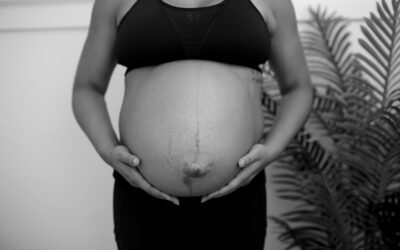When you’re pregnant with twins, it can suddenly feel like you’re juggling twice the excitement — but also twice the anxiety. And if at the top of your list of worries is “How is my body going to handle birth??” Don’t worry, we’ve got all the answers for creating twin birth plans that work for your family.
Creating a twin birth plan isn’t just a good idea — for some it’s the secret weapon to navigating the wild world of multiple births. So, let’s dive in and get you prepped for double the trouble (and double the cuteness).
What makes twin births unique?
Having twins isn’t just about buying two of everything (though, you’ll definitely be doing a lot of that). Twin pregnancies come with their own special considerations:
- Positioning: The position of your twins (are they in a head down position or presenting with feet, knees, or buttocks first?) influences your delivery method.
- Delivery Sequence: The timing and approach for each delivery can change even after your first baby is born. For example, one baby might decide to go the vaginal route while the other opts for a cesarean.
- Preterm Birth: More than half of twin pregnancies will result in preterm birth (meaning your babies are born early, before 37 weeks of pregnancy), increasing NICU needs.1
- Increased Monitoring: Extra heart rate monitoring and medical support are needed when you are laboring with twins.
- Higher Complication Risk: Things like cord prolapse or twin-to-twin transfusion syndrome might need quick action.
- Placental Factors: are your twins sharing a placenta (monochorionic) or do they each have their own (dichorionic)? This can impact your pregnancy and delivery game plan.
Crafting your twin birth plan
Now, let’s get down to the nitty-gritty of your twin birth plans. Remember, this isn’t set in stone — it’s more like a wish list that’s open to plot twists. Here are some things to think through and consider for your twin birth plan.2
Delivery method
First things first: How are these babies making their debut? While many twin pregnancies can result in successful vaginal births, sometimes your doctor might suggest a cesarean section. And it can be important to consider that your birthing circumstances can change mid-delivery. Sometimes, your doctor may recommend an emergency cesarean after a trial of labor.
Chat with your healthcare team about your possibilities based on your specific circumstances, including having them check the position of your babies and discussing any potential risks.
Timing is everything
Twin pregnancies come with higher risks of complications like gestational diabetes, preeclampsia, and an increased risk of preterm labor.3
Some research suggests that delivering between 37 and 38 weeks might be the sweet spot. It’s all about finding the Goldilocks of birthing zones — not too early, not too late.4
Pain management
Consider your options for pain relief. Look into epidural anesthesia, nitrous oxide, and natural pain management options. Twin births can be longer and more intense, so it can help to consider all the options and be flexible in your strategy.
Postpartum plans
Think about those first moments after birth. Do you want skin-to-skin contact with both babies? Are you planning to breastfeed right away? Or are you team formula? There’s no wrong answer here — just what works best for you and your new dynamic duo.
Sample twin birth plan template
Just like there’s no perfect birth plan, there’s no perfect twin birth template. But putting your plan together in an organized worksheet can be really helpful — because let’s be honest, it can be hard to focus during labor.
Here’s a “quick and dirty” template to help you get your thoughts organized:
- Personal Info: Names, due date, healthcare providers
- Labor Preferences: Pain management, mobility, monitoring
- Delivery Preferences: Method, who’s in the room
- Postpartum Care: Skin-to-skin, cord clamping, feeding plans
- Special Twin Considerations: NICU plans, feeding strategies
Prepping Your Pelvic Floor
Now, let’s talk about your pelvic floor. With twins, it’s under double the pressure (literally). This can cause your pelvic floor muscles to change and put you at a higher risk of developing pelvic floor dysfunction.5,6 Here are some ideas to keep it in fighting shape — no matter what your birth plan is:
- Core strengthening
- Injury prevention with pelvic floor PT
- Safe exercise to keep your full body strong
- Stretches for your lower body to stay flexible
If you want a vaginal delivery, it can help to do more of a “traditional” birth prep. Learning effective pushing techniques, perineal massage, and practicing birthing positions can help you prepare your pelvic floor.
FAQs about twin birth plans
Q: What’s the safest way to deliver twins?
This really depends on your specific situation. The position of your babies, your health, and how far along you are can all play an important role.7 Chat with your obstetric team for this one!
Q: What should I ask my OB about my twin birth plan?
Some things to consider asking your OB would be about their experience with twin deliveries, their recommendations for timing and birth method, and how they handle unexpected twists and turns during twin births.
Q: How does twin birth impact my pelvic floor?
Twin pregnancies put extra strain on your pelvic floor. And this increases your risk of pelvic floor disorders in pregnancy and in the postpartum. Talk to your provider about pelvic floor rehab, or hit us up directly.
Creating a twin birth plan is all about being prepared while staying flexible. The ultimate goal is getting everyone safely through birth, so be ready to roll with the punches. With the right prep and support, you’ll be rocking this twin birth thing in no time!
Twin birth plans are easier with the V-Hive!
For even more guidance, you can check out the Childbirth Preparation Program in the V-Hive, which guides you through safe and effective pelvic floor exercises during your twin pregnancy. Or, you can schedule an online consultation with one of our physical therapists for a one-on-one collaboration to create a birth plan.
References
- ACOG. (2023). Multiple pregnancy.
- ACOG. (2022). Sample birth plan template.
- Mayo Clinic. (2022). Twin pregnancy week by week.
- Chueng, Y., et al. (2000). Mortality of twins and singletons by gestational age: A varying-coefficient approach. American Journal of Epidemiology.
- Kubotani, J., et al. (2014). Assessing the impact of twin pregnancies on the pelvic floor using 3-dimensional sonography. Journal of Ultrasound in Medicine.
- Bodner-Adler, B., et al. (2019). Prevalence and risk factors for pelvic floor disorders during early and late pregnancy in a cohort of Austrian women. Arch Gynecol Obstet.
- Root, E., et al. (2024). Multiple birth delivery. StatPearls.




